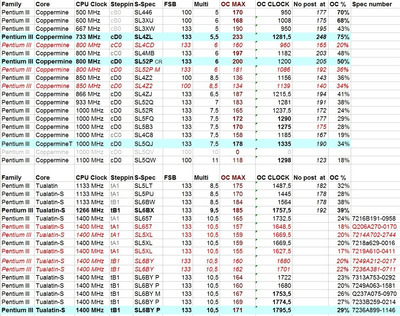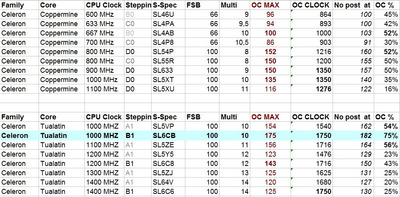First post, by VooDooMan
- Rank
- Member
The aim of this project was to find out how well Pentium III processors overclock.
I needed to select some Tualatin CPUs that overclock at least to 166 MHz.
Also, I wanted to find out if there are any Coppermine CPUs that would be able to reach 200 MHz and more.
Motivation: There is one project that I am still working on (ECS P6S5AT and 166 FSB) and I had to find as many solid and stable components (CPUs, RAM) as possible to see how they perform on that motherboard. Ultimately, I wanted to build a computer with Tualatin CPU clocked at 1750 MHz with 166 MHz, DDR1 RAM and a fast and solid AGP card (Geforce 6800Ultra) with the proper AGP/PCI divider at 166 FSB.
My experience with overclocking has not been very good so far. I would say I’m a poor overclocker since I do not use any extreme cooling and I don’t even own an electric meter 😁 But I wanted to try 😉 Previously, I had no desire to overclock before I found out that there is one socket 370 motherboard with SiS635T that has the right dividers for AGP and PCI at 166 and 200 MHz. Other than this, I don’t see a point to overclock at all besides just checking how far a given component can go. That is why I wouldn’t built a system on any other motherboard that has overclocked AGP and PCI.
Ok. Enough of that boring introdcution, let’s get to the point 😉
First of all, what is a stable overclock? For me it's when I enter windows, do all the tests (3D Mark2001SE, Everest Memorytest) stress the whole thing for 30 minutes under full load, and get no errors in MemTest86. Additionally, I also check what is the maximum FSB for the CPU to post.
For the purpose of testing I used two motherboards: ASUS TUSL2C and ABIT ST6. Personally, I think that ST6 is much better for OC. TUSL2-C allows for synchronous OC only up to 166 MHz, while ST6 has synchronous OC options up to 250 if I remember correctly.
There were two graphics cards used: GeForce 5200 AGP and GeForce 6200 AGP
Cooling was simply air, regular fan but with copper heat sink.
Volatges in most cases were set to 1,85v max(Coppermines) and 1,7,5v (Tualatins)
The key part to achieve high frequencies is of course fast, solid and stable SDR PC133 RAM - but I am gonna devote a separate topic for this 😉
Here is the group photo of the tested CPUs:
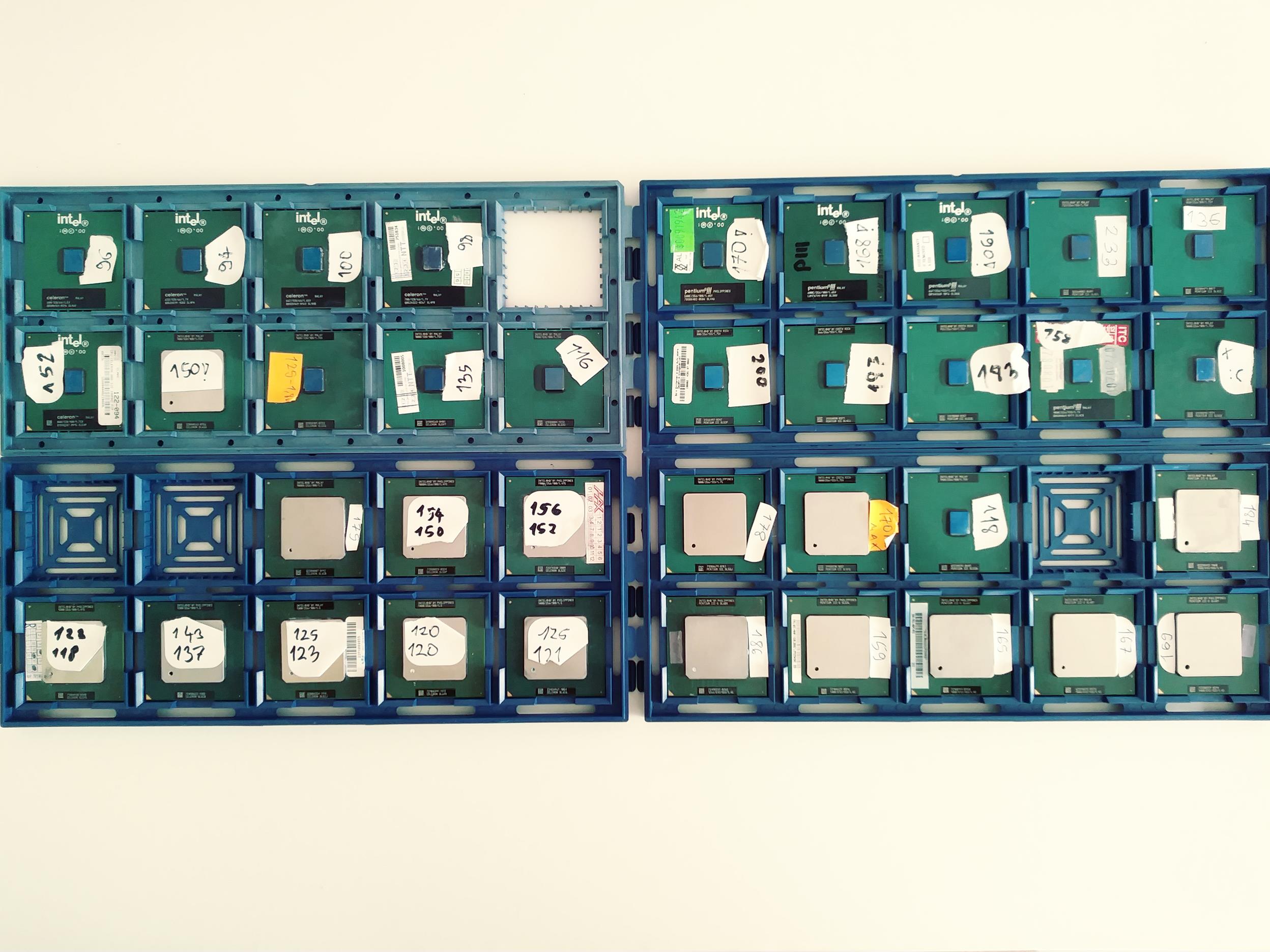
The comparison results:
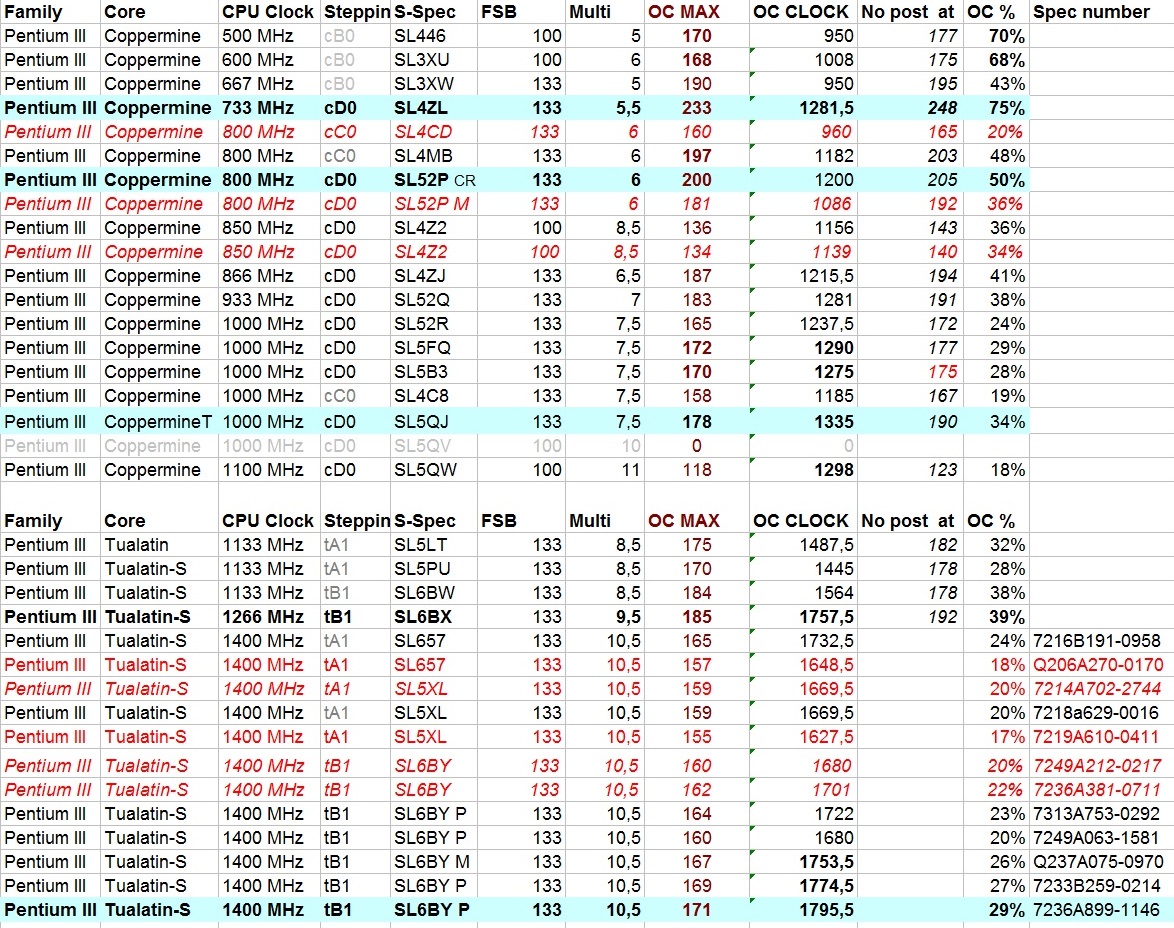
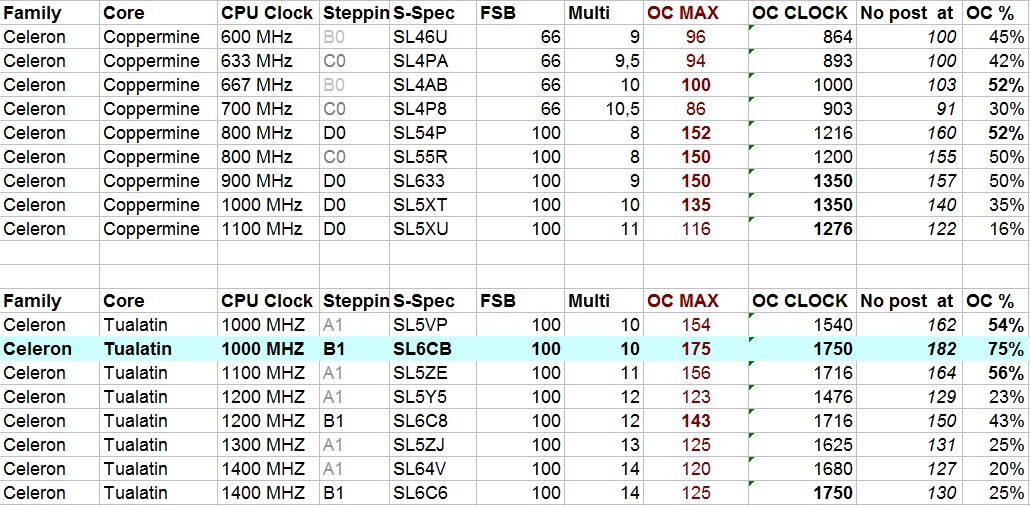
As you can see the best Coppermines for overclockig are cD0 ones.
Let’s disscuss the most interesting ones:
PENTIUM III - COPPERMINE CORE!
PIII Coppermine 850 MHz - SL4Z2 (cD0)
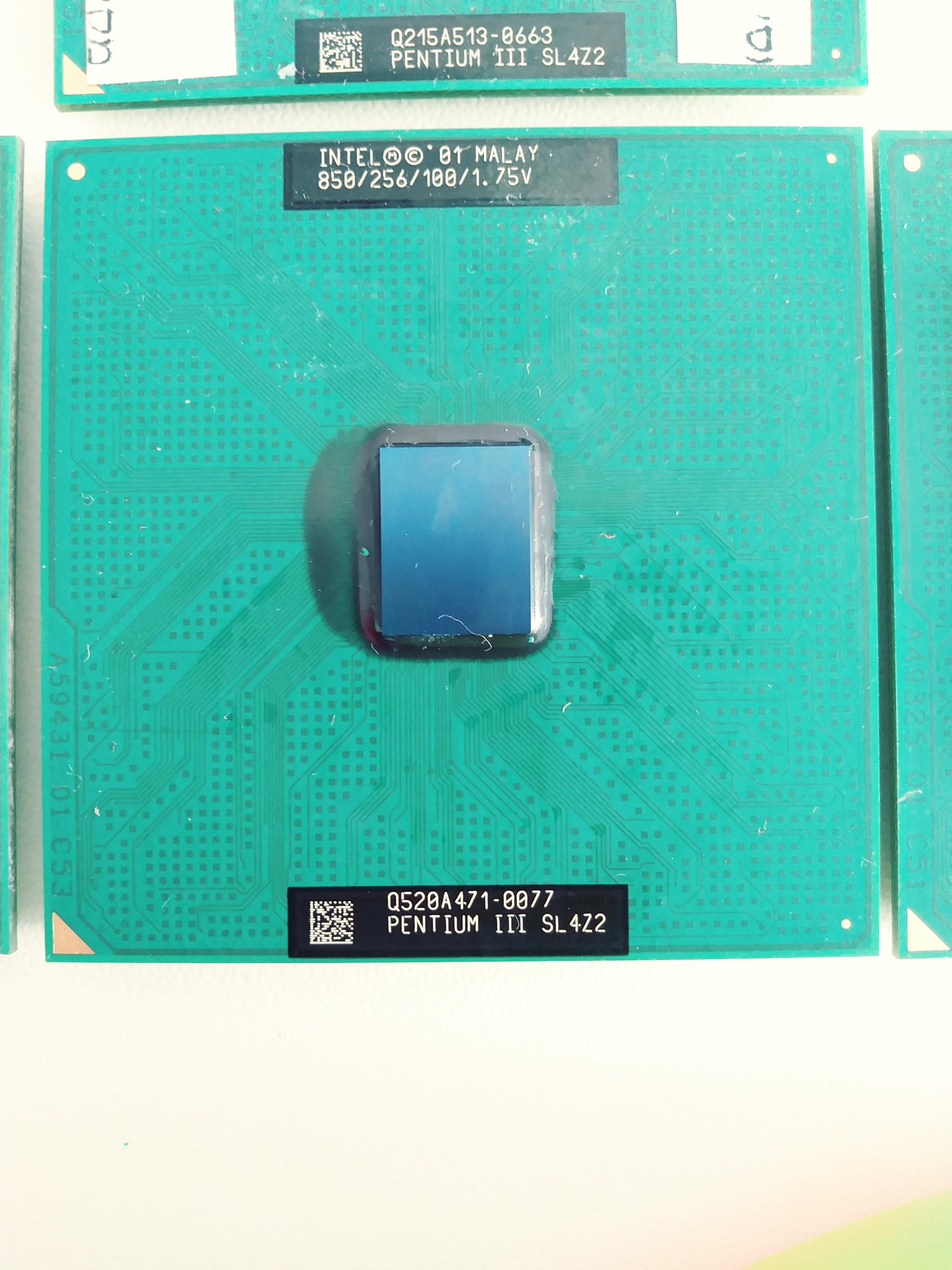
This one didn’t overclocked as I planned. The best one gives me 136 FPS but that's enough to go from 850 MHz (100 MHz) to 1133 MHz (133 FSB). It makes a good option for old BX boards that do not support Tualatins.
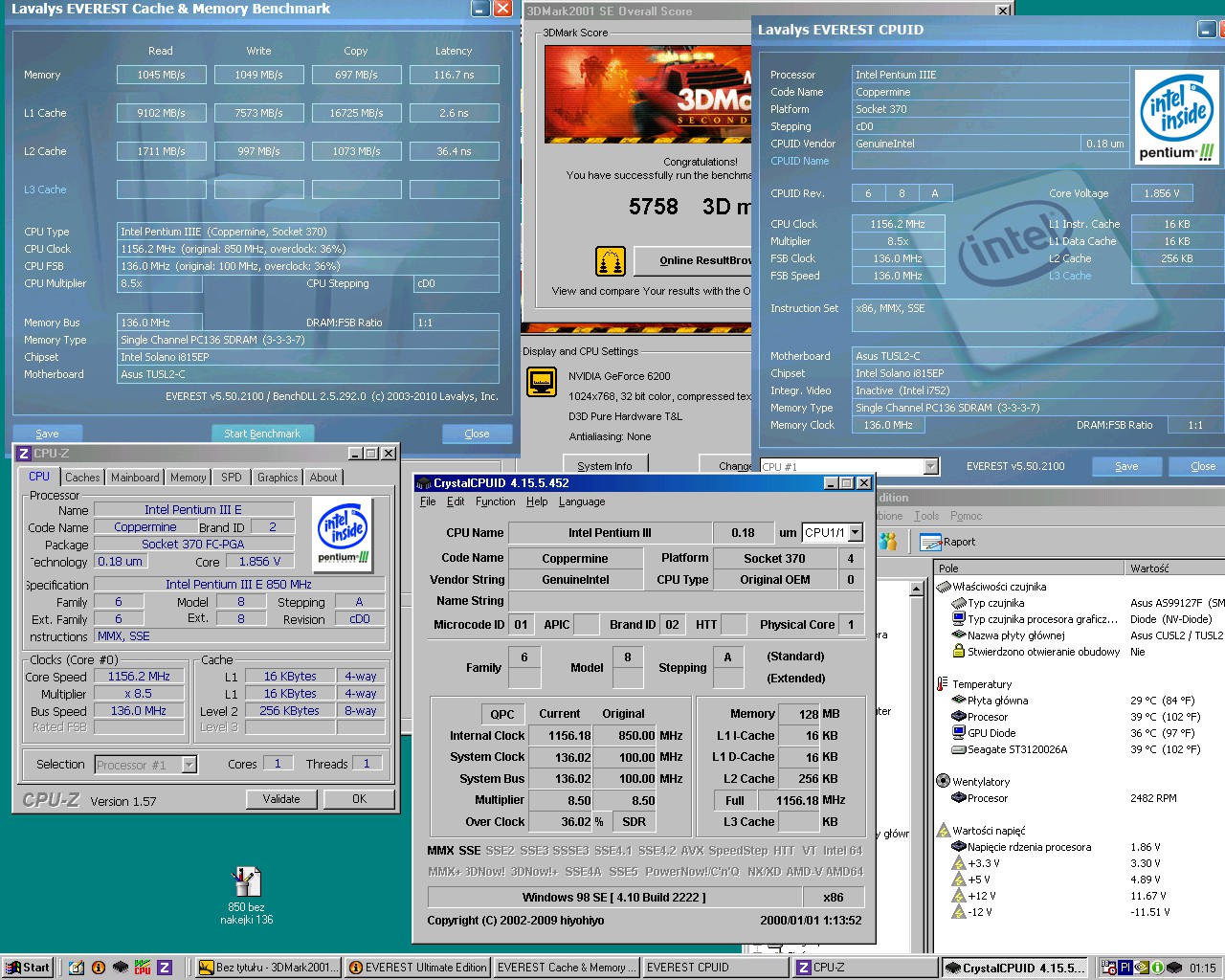
PIII Copperine-T 1000 MHZ - SL5QJ (cD0)
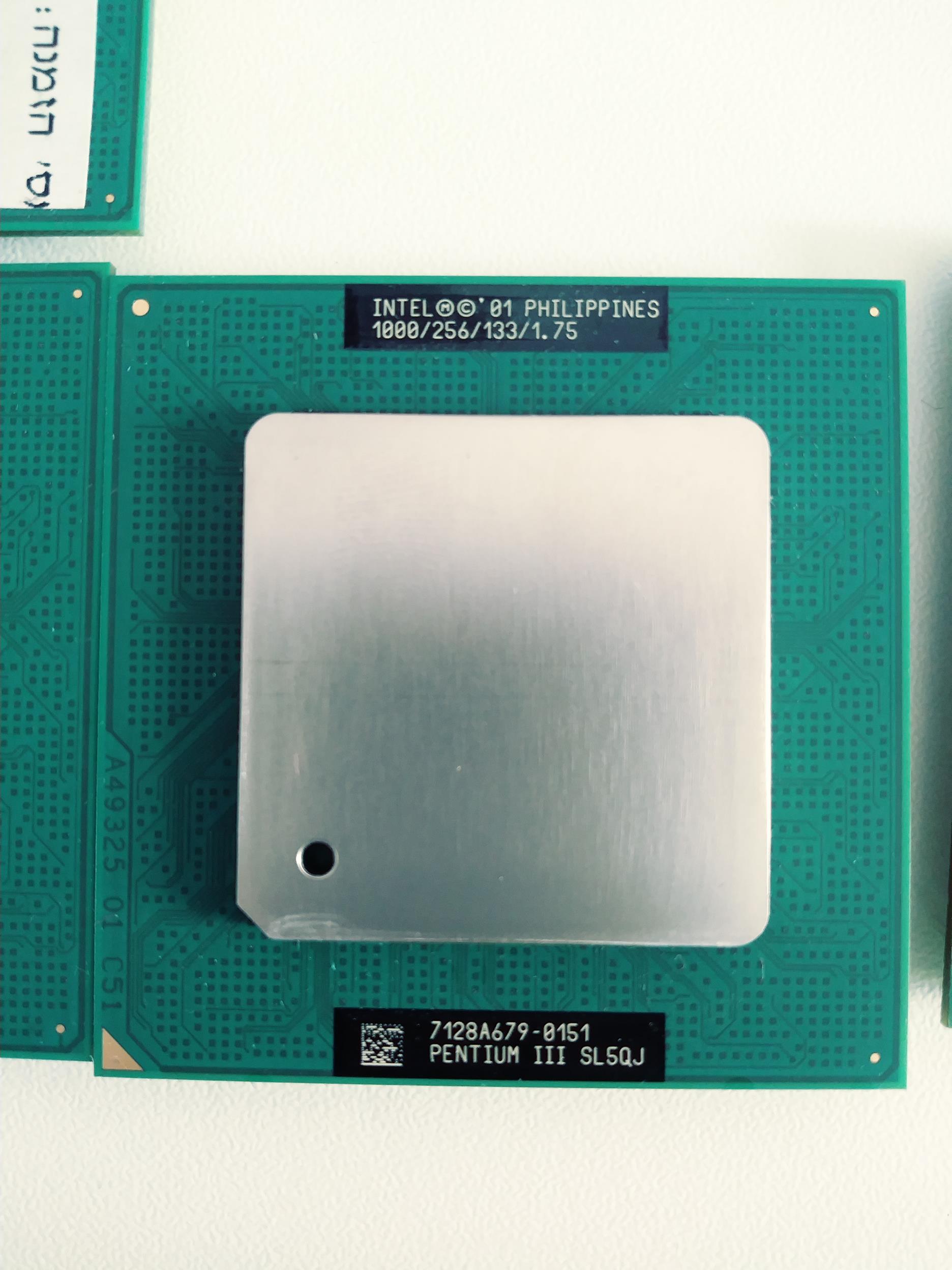
One of the best out of the 1 GHz family. This is not a regular Coppermine but a CoppermineT. The maxium stable FSB was 178 MHz! That gave me CPU CLOCK = 1335MHz! Pretty close to 1,4 GHz 😉 Other cD0 from that family were also good:

SL5B3 – 170 MHz
SL5FQ – 172 MHz
https://u.cubeupload.com/roksana/166FSBSL5FQiSL5B3.jpg
All three of them exceeded 166 MHz so I am satisfied 😉
The one I do not recommend from the 1 GHz family is SL52R, which i my case overclocked to 165 only.
Please also notice that PIII Coppermine SL4C8 (cC0) is not a good overclocker (158 FSB MAX)
PIII Coppermine 733 MHz - SL4ZL (cD0)
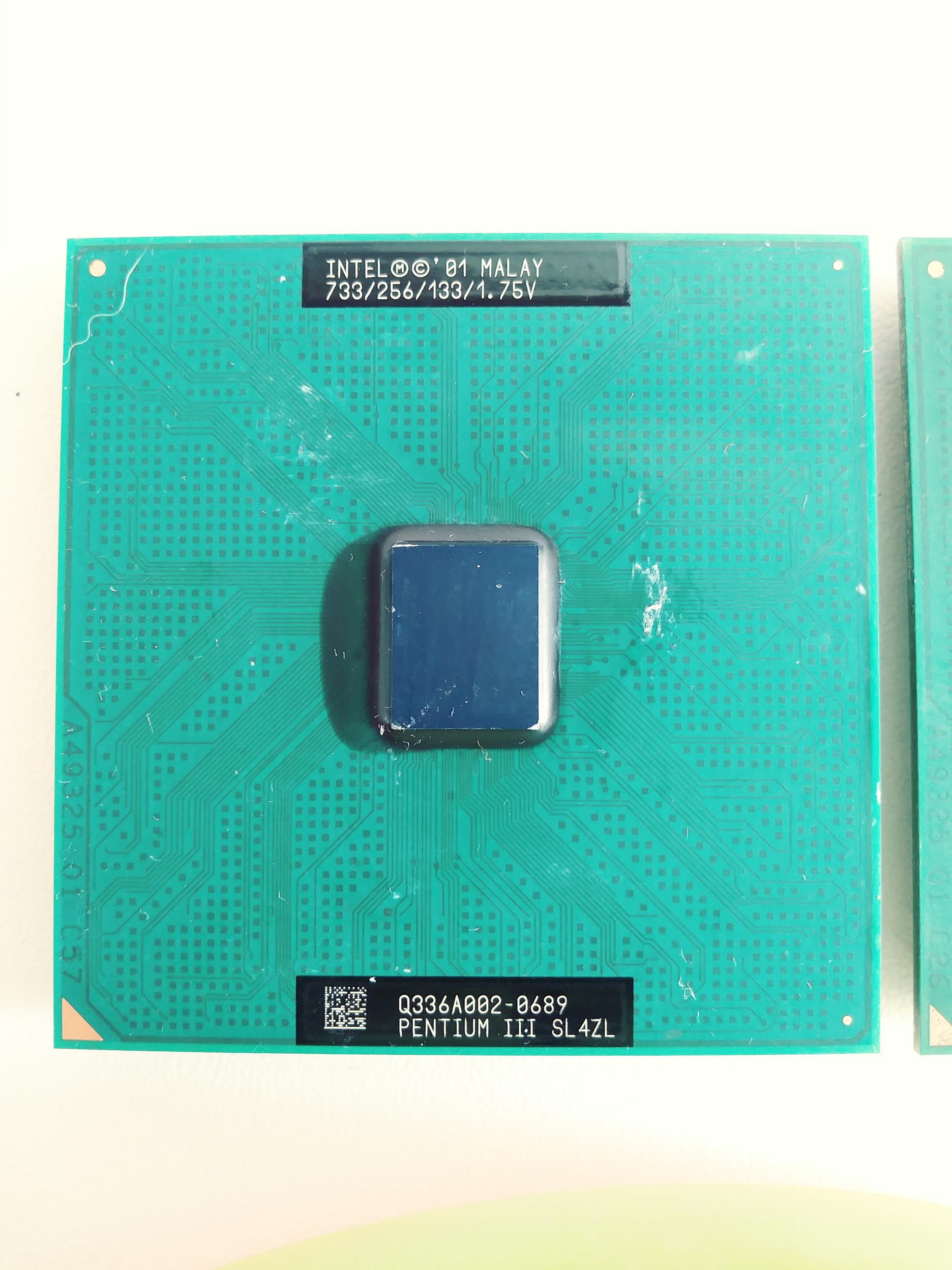
Now this is the one that surprised me the most 😁
The first CPU that I got running at 200 MHz was SL52p (PIII 800 cD0). I was happy to reach that level, but I wanted more 😉 So I bought one with the same stepping but a lower multiplier (5,5x) hoping to get a little bit more than 200 MHz. What I got was a total shock 😁 235 MHz Eventually!!! At first it was 233MHz, but That then I swiched to a different ABIT ST6 board and the result improved. The CPU voltage was only 1,85v! That is 75% OC!!!

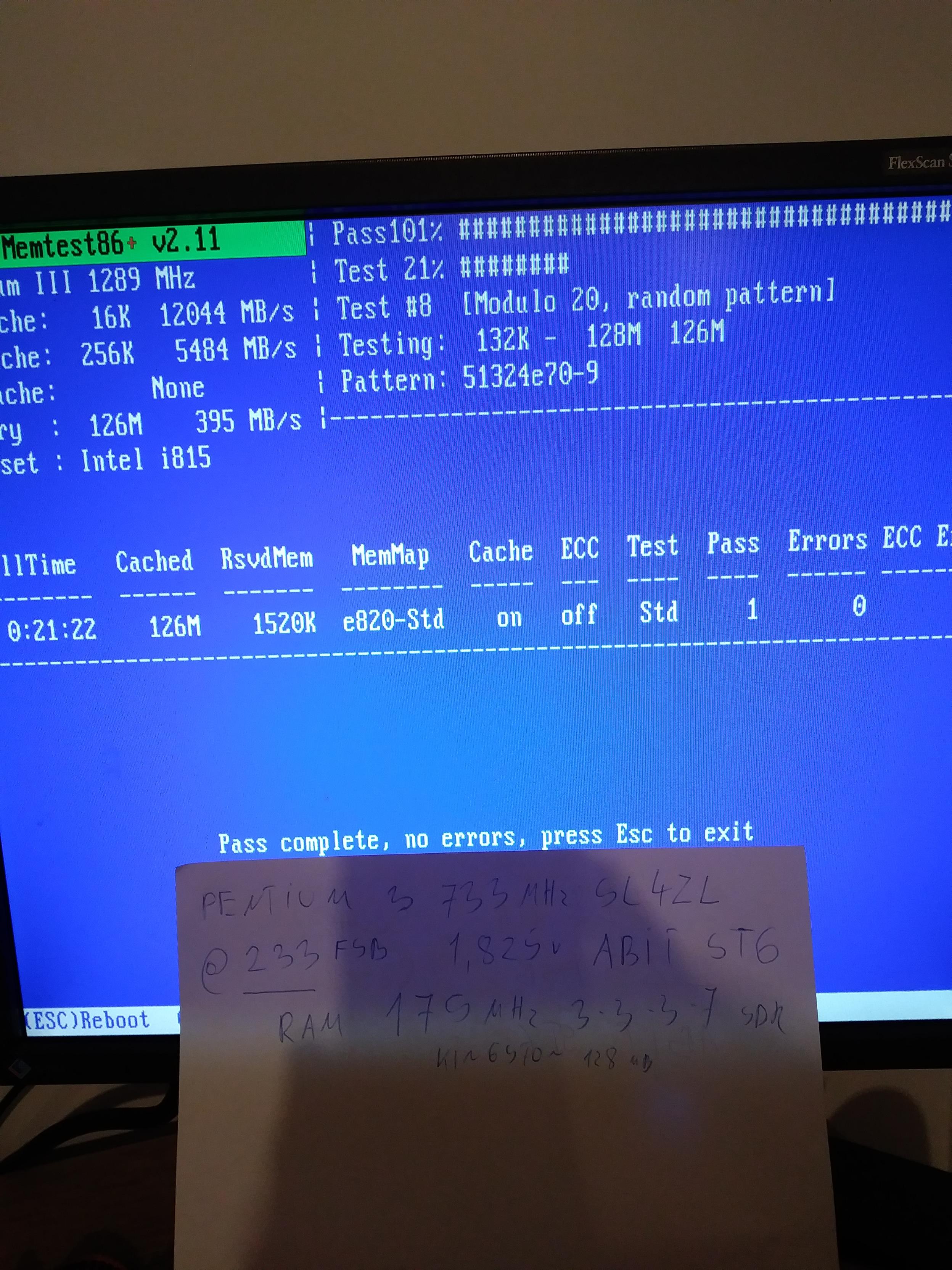
At the default voltage it can stably operate at 220 MHz 😉
CELERON - COPPERMINE CORE!
The whole CELERON COPPERMINE family disappointed me a lot. Maybe I just wasn't lucky and haven’t come up with the right batch, but out of 10 different CPUs of that type only 3 exceeded 150 MHz ;( none of them reached even close to 166 MHz. Perhaps someone can suggest which S-Spec is the best? SL54P (Celeron 800 MHz, D0) was the best one so far with 152 MHz stable FSB.
CELERON - TUALATIN CORE
I was much luckier with Tualatin Celerons but it required some skills to achieve my goal 😜 At first ,the results were far from satisfactory.... The best of celerons: 1300 and 1400 MHz were really, really bad(130 wasn't possible) even with the newer B1 stepping. Initially,the best result I got was 156 FSB on some regular Celeron 1100 MHz, but that was A1 stepping. I knew I had to find B1 with as small multiplier as possible, so I finally came across a SL6CB (those B1 seems much less common nowadays)
Celeron Tualatin 1000 MHZ - SL6CB (B1)
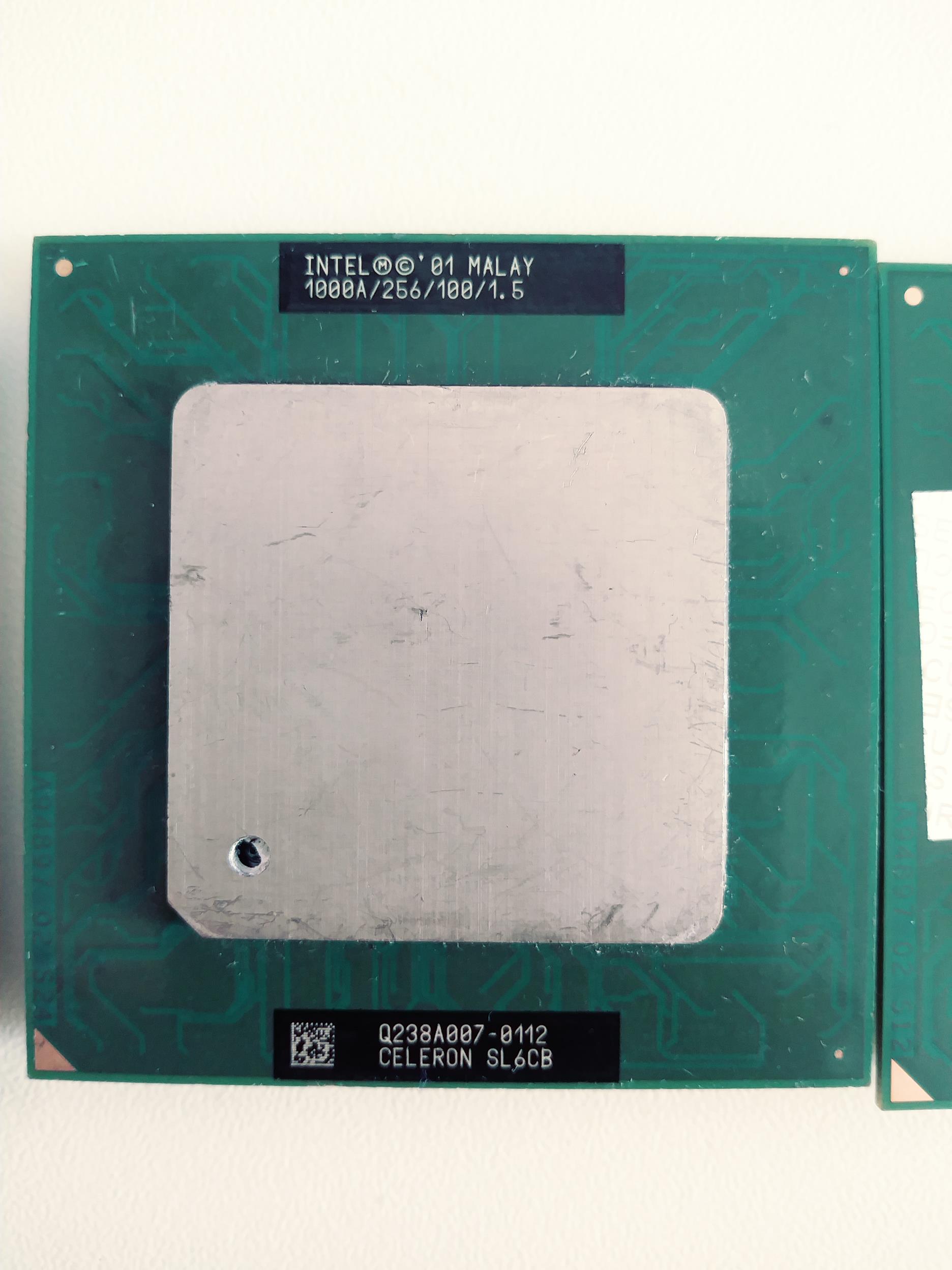
At last I have found a Celeron Tualatin that works properly at 166 FSB and even much more 😉
The 1750-1800 MHz seems like the regular limit for the Tualatin core. To get 1800 MHz and more you need professional cooling and volt-mods.

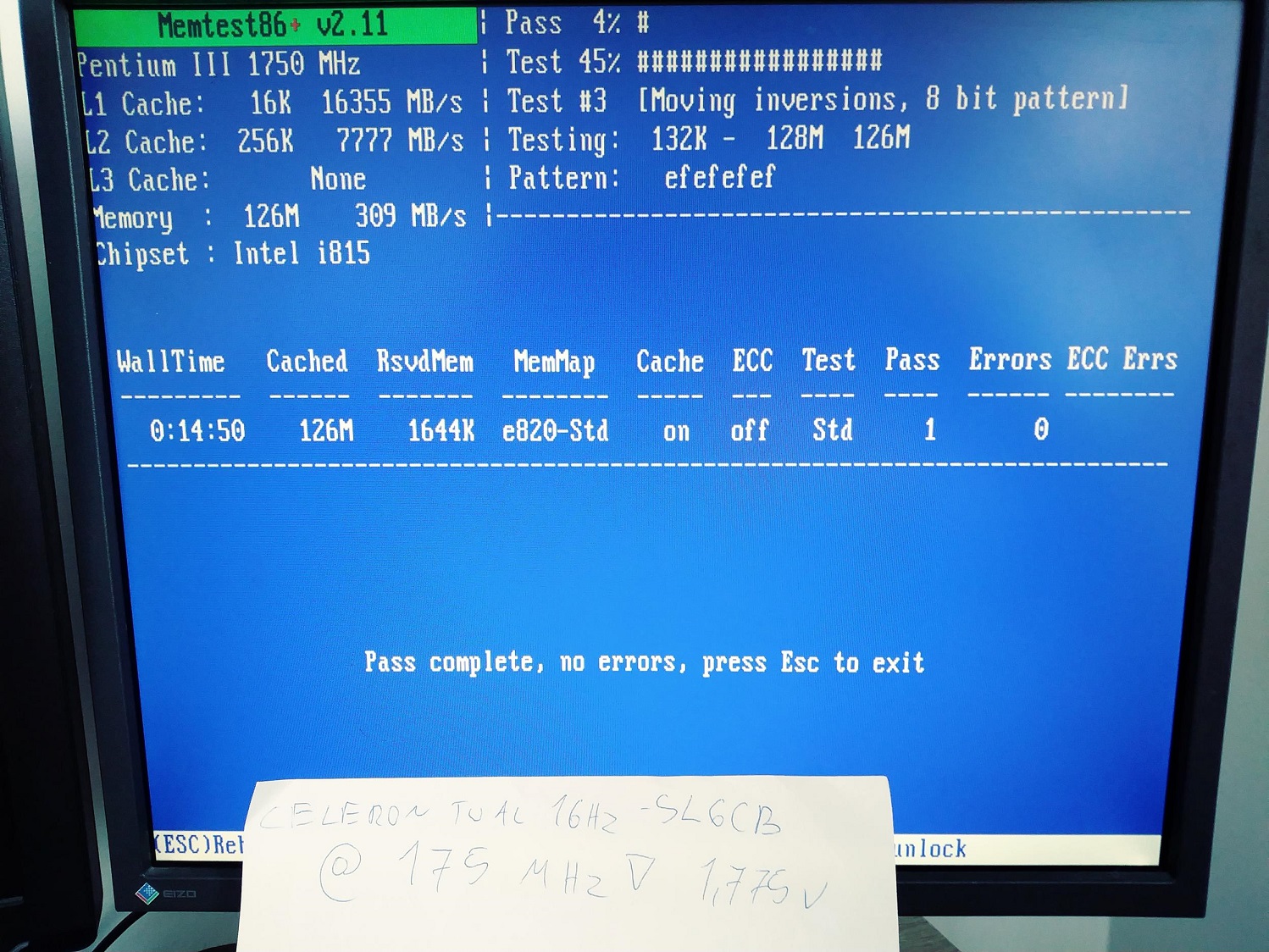
PENTIUM III - TUALATIN CORE
From the whole PIII Tualatin Core family I only used the 1400 MHz ones for the most of my life. There was no purpose for me to own anything slower than 1,4 MHz until I started overclocking.
PIII Tualatin 1400 MHZ - SL6BY (tB1)
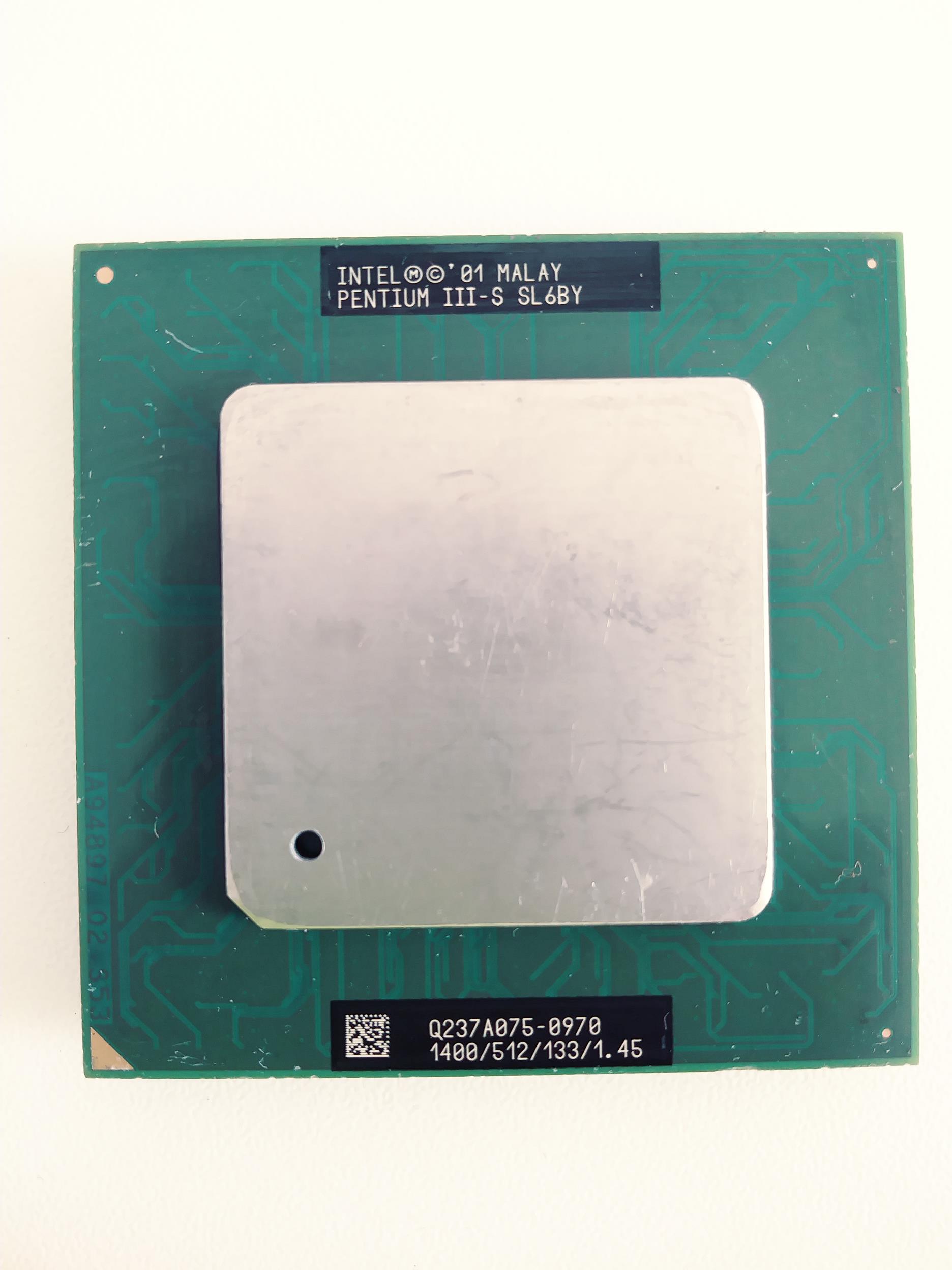
In the begging I had like 7 pieces of a PIII 1,4 GHz CPUs (3 x SL5XL, 2x SL657 2x SL6BY). NON of them overclocked as I wanted to. The best of them all stopped at 165! 1 MHz from the point where I wanted and needed to be 😜 finally I decided to buy 5 more of those SL6BY for a ridiculously stupid price... and 3 of them exceeded 166 MHz 😉
Now the best one works at 171 MHz!
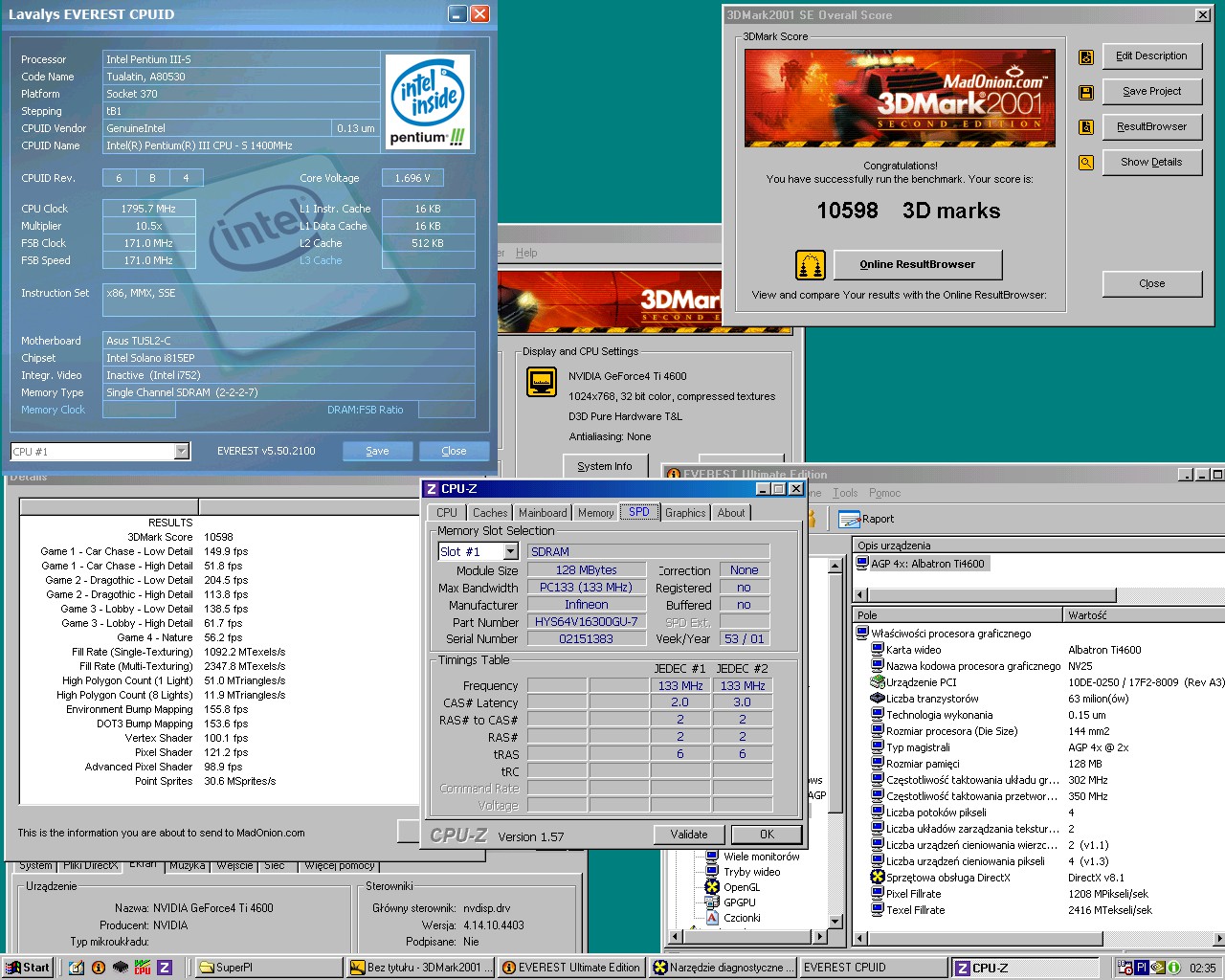
When it comes to other cpus from that family I was hoping to get close to 200 MHz with SL6BW, but I think I got a bad batch – the final result was only 184 MHz,
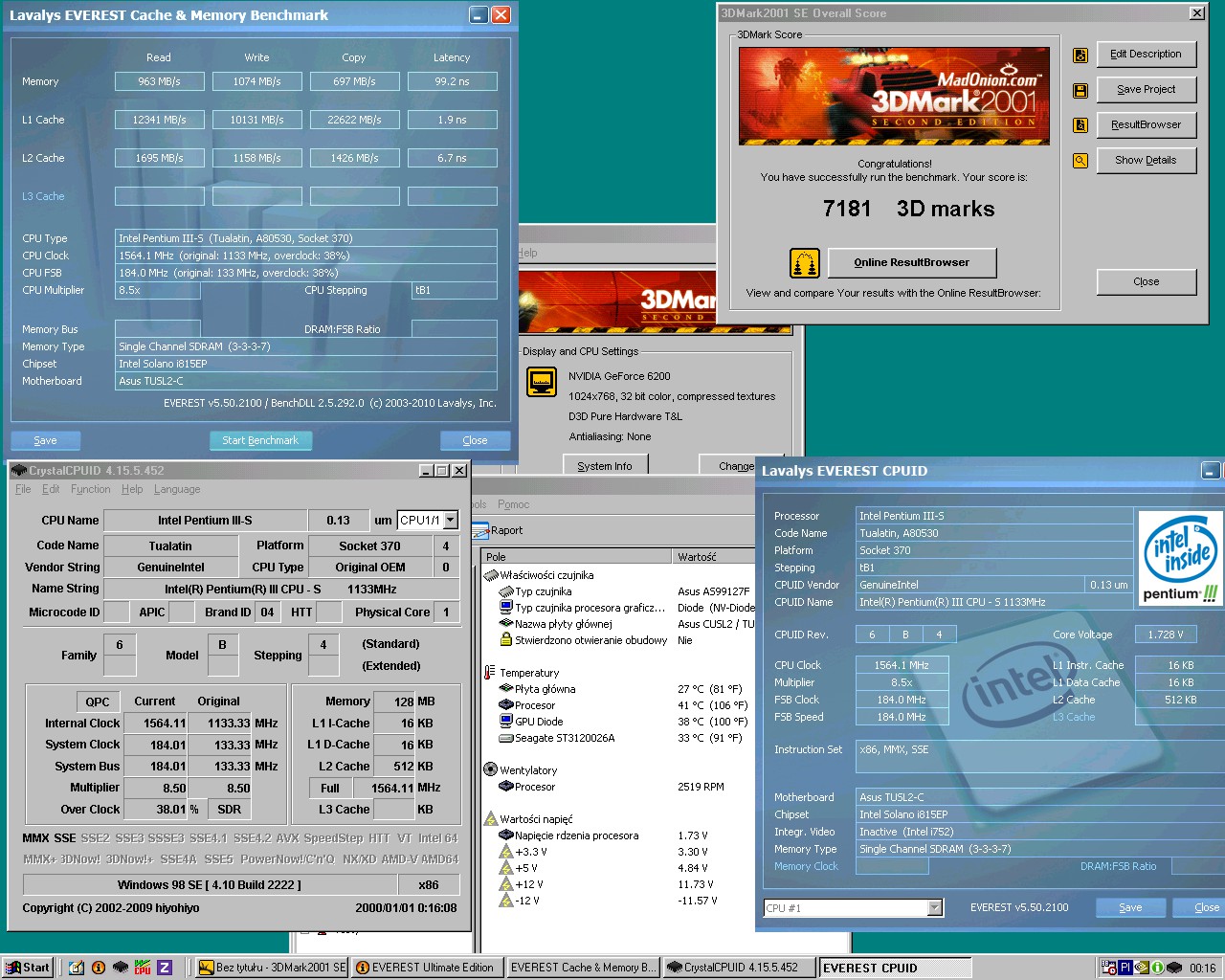
Even the faster one (SL6BX) got a higher FSB:
That's it. I hope you annoyed it and had some fun.
I know there are more experienced Overclockers here so please share your results if you can.
I am also aware of the fact that most some of those scores would be definitely beaten in good hands and with proper cooling, but those results are enough for me, I have reached my goals.
I’ve got some fast 1 GHz copper mines that overclock easily to 166, some slower ones that go to 200 MHz, and the crazy one that reaches 235 MHz! But most importantly I have finally found the right batch of PIII-S 1,4GHz (SL6BY) that works flawlessly at 166 MHz with a relative small voltage increment (1,525v). So I can finally finish my “TualGOD” project 😁
